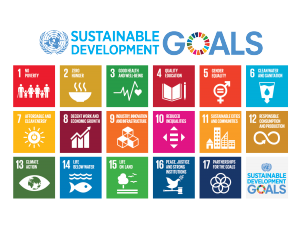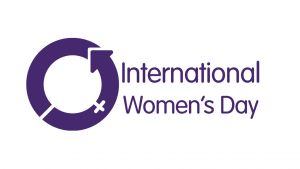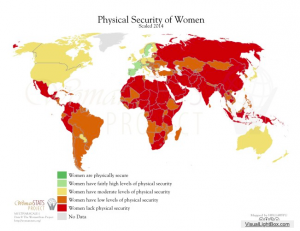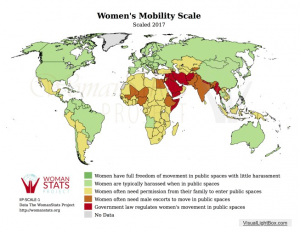Three years into the UN Sustainable Development Goals (SDGs) Program, the United Nations has reason to believe ample progress will be made in response to the seventeen goals outlined in 2015. (1)

Photo courtesy of the United Nations. https://sustainabledevelopment.un.org/sdgs
Goal 1: Poverty
While numerous local and international organizations have identified the eradication of poverty as a global priority, the presence and unpredictability of natural disasters holds serious implications for numerous communities around the world. In 2017 alone, over $300 billion was spent on disaster relief – the majority of it going to the aftermath of three hurricanes in North and Central America.
Goal 2: Food Security, Nutrition, Agriculture
Interestingly enough, the growing problem of climate change seems to have a hold on the rate of world hunger, and it has been noted that the progression of climate change has a direct causational effect on agricultural hubs. In 2017, the percentage of undernourished people worldwide was 11.0, a 0.8% increase from the year before. While a 0.8% increase sounds minuscule, the difference in this situation accounts for 38 million people. It is significant to remember that climate change has serious long-term implications for people, animals, and the environment.
Goal 3: Health and Well-being
Pursuing health and well-being for individuals worldwide is one of the biggest obstacles the UN has set for itself, and while statistics show progress has been made within this development goal, the overabundance of individuals who die from preventable diseases is daunting. The rate of maternal mortality and child mortality has gone down with the increase of access to skilled health care providers, and the number of people affected by HIV has been decreasing slowly over the last few years. However the number of people affected by malaria has been steadily increasing, and the number of people who died worldwide from cardiovascular disease,
diabetes, cancer, or chronic respiratory disease was more than 32 million in 2016. Overall, Goal 3 is progressing slowly and steadily. However, more needs to be done in response to ending mosquito-related diseases and mortality rates driven by unsafe sanitation.
Goal 4: Education
The world has shown great process when it comes to the number of children worldwide enrolling in early childhood and primary school with an increase from 63% of children worldwide in 2010 to 70% in 2016. Even in LDCs (least developed countries), children are receiving the opportunity to go to school. In addition, there has been a rise in training opportunities for primary school teachers. However, with the focus on primary education, secondary education and higher education has seen little effect or influence from local or international organizations, and while the quality of teachers and the number of students is steadily increasing in primary schools, the lack of electricity and running water still proves to be an issue in LDCs.
Goal 5: Gender Equality
With all the attention campaigns like #MeToo are receiving, issues relating to gender are on everyone’s minds. But while Americans and other groups in the Global North are rallying around issues of sexual harassment, often we forget other issues more commonly found in the Global South. Achieving gender equality continues to be a challenge where the presence of attitudes towards gender are often directly related to social norms of a community. Legislation has made it possible for more women to be allowed into areas of government and fewer girls to be forced into marriage unions, but the influence of religion and culture makes problems of circumcision, gender-related violence, and unpaid care work very challenging.
Goal 6: Water and Sanitation
The problem of lack of accessibility to water effects billions of people worldwide. But with the presence of countless non-profits focusing on issues of water, the end of the World Water Crisis may be obtainable in our lifetime. If you conduct a simple Google search of non-profit organizations addressing water, you can instantly find a list of sixteen organizations that deal exclusively with water-related projects (although there are many more). With groups like Charity: Water and Water.org who have provided water to 8.4 million and 13 million people respectively, the solution to the lack of water accessibility is clearly attainable (2-3).
Goal 7: Energy
Access to energy has made some advances, especially in LDCs where access to electricity has nearly doubled since the creation of the Millennium Development Goals (MDGs) in 2000.
Goal 8: Economy and Employment
The majority of issues relating to employment are universal. While other SDGs may be more heavily focused on specific regions, when it comes to employment, there are only a few issues exclusive to the Global North or South. Certainly different issues affect different regions more or less, but many problems related to the gender pay gap, informal employment, and unemployment can be seen worldwide. It is significant to note, however, that the gross domestic product (GDP) rose 1.3% globally and labor productivity has grown 2.1% since 2017.
Goal 9: Infrastructure, Industrialization, and Innovation
It’s hard to believe that communities without basic needs have access to 3G broadband networks, but that’s the fact. In 2016, third generation (3G) mobile broadband networks was accessible to 61% of people in LDCs and 84% of people globally. In addition, Goal 9 boasts an increase in global manufacturing and a decrease in carbon emission intensity.
Goal 10: Reduce Inequality
Inequalities in income, export tariffs, and remittances remain prevalent. It appears that not much attention is being given to Goal 10, despite the ever-constant presence of transnational and international inequalities.
Goal 11: Inclusivity, Safety, and Sustainability in Cities
With the steady increase of the human population, many cities around the globe are experiencing a myriad of problems arising from rapid urbanization. The inability to remove waste, the overabundance of ambient air pollution, and the presence of detrimental natural disasters are but three examples of how urban areas are struggling to meet the demands of the growing population, and with the uncontrollability and unpredictability of population growth, Goal 11 in by far an urgent endeavor.
Goal 12: Consumption and Production
As the human population continues to grow, so does our global material footprint. Consumption and production will always have an overwhelming presence on the global economy, but the stress on sustainability is more important now than ever, especially in developed countries where the per capita footprint is more than double that of developing countries. However, the material footprint of developing countries has seen an increase from 5 metric tons to 9 since the creation of the MDGs.
Goal 13: Climate Change
We’ve all seen the advertisements about saving the polar bears, and whether or not you love animals, it is no joke that animals and ecosystems are being destroyed in direct response to global warming. In conjunction with the Paris Agreement, many countries are starting or continuing to take climate change seriously. With the presence of disastrous hurricanes, rising sea levels, and extreme weather conditions, there is no denying the current state of emergency when it comes to climate change. The United States alone experienced seventeen hurricanes during the 2017 season – the aftermath of which climbed to over $200 billion in damages. (4)
Goal 14: Oceans and Seas
Eutrophication and pollution continue to be some of the biggest problems around the world when it comes to our oceans and seas (5). Every year more and more marine waters are being protected, but without a supportive global network, the state of our waters are in crisis. Eutrophication in itself is estimated to increase 20% by 2050 if more actions are not taken.
Goal 15: Ecosystems
Despite many organizations like World Wildlife Fund (WWF) who have been working hard to protect the world’s animals, the list of threatened species remains lengthy. The impact of humans and their activities, such as unsustainable agriculture and deforestation, have direct effect on the overabundance of habitat loss. Another growing issue, invasive alien species are on the rise and pervasive as ever. But it is worth remembering that issues pertaining to ecosystems are not only disruptive to animal life. Issues of deforestation and land degradation have had a huge impact on human settlements and their quality of life too.
Goal 16: Promote peaceful and inclusive societies and justice for all
Injustice shrouds our world in a number of ways, including but not limited to human trafficking, child punishment, wrongful incarceration, bribery, and targeted violence. Human trafficking continues to be a global issue, with both boys and girls being trafficked for sex and/or labor. Human trafficking is a tricky problem to solve mostly because, if we do not directly see the effects, we do not give much thought to the problem. But it is vital to remember that human trafficking is happening in all parts of the world – even the United States. The last decade has shown no decline in the number of individuals incarcerated without a sentence, nearly one in five organizations claim they have received a bribery offer, and over one thousand human rights defenders and journalists have been killed since 2015. All three of these issues show little development, and prove that corruption still has a hold on many parts of the world. Fortunately, many countries are creating, and utilizing, national human rights institutions. But all in all, more needs to be done to minimize corruption and expand justice for all.
Goal 17: Global Partnerships
Official Development Assistance (ODA) has decreased over the last year. However debt service as a part of exports has increased steadily in LDCs since 2016, despite merchandise exports declining during the same time frame. Overall, the UN suggests that more financial support needs to be provided to developing countries so that they are can have more resources with which to establish and maintain various development agendas in areas where they need it the most.
______________________________________________________________
Endnotes & Bibliography
(1) “The Sustainable Development Goals Report 2018.” UNstats. https://unstats.un.org/sdgs/report/2018/overview/.
(2) “We Believe We Can End the Water Crisis in our Lifetime,” Charity: Water, https://www.charitywater.org/.
(3) “Opportunity starts with safe water,” Water.org, https://water.org/.
(4) Willie Drye, “2017 Hurricane Season was the Most Expensive in U.S. History” last modified November 30, 2017. https://news.nationalgeographic.com/2017/11/2017-hurricane-season-most-expensive-us-history-spd/?user.testname=none.
(5) Eutrophication is the process in which excess minerals and nutrients ran off in a body of water leading to the depletion of oxygen, the growth of plant matter, and the death of animals within the ecosystem.
_______________________________________________________________
Additional Reading
Amutabi, M.N. Africa in Global Development Discourses. Nairobi: Centre for Democracy, Research and Development (CEDRED), 2017.
Dodds, Felix, David Donoghue, and Jimena Leiva Roesch. Negotiating the Sustainable Development Goals: A Transformational Agenda for an Insecure World. London: Routledge, 2017.
Education for People and Planet: Creating Sustainable Futures for All. Paris: Unesco, 2016.
Halbery, Niels. Global Development and Organic Agriculture: Challenges and Prospects. Wallingford: CABI, 2006.
Indigenous Knowledge: Local Pathways to Global Development. Washington D.C.: World Bank, 2004.
Little, Daniel. The Paradox of Wealth and Poverty: Mapping the Ethical Dilemmas of Global Development. Boulder: Westview Press, 2003.
Mal, Suraj, R.B. Singh, and Christian Huggel. Climate Changes, Extreme Events and Disaster Risk Reduction: Towards Sustainable Development Goals. Cham: Springer, 2018.
Mehta, Lyla. Displaced by Development: Confronting Marginalisation and Gender Injustice. New Dehli: Sage, 2009.
Perspectives on Global Development and Technology. Leiden: Brill, 2000.
Picciotto, Robert, Funmi Olonisakin, and Michael Clarke. Global Development and Human Security. New Brunswick: Transaction Publishers, 2007.
Shawki, Noha. International Norms, Normative Change, and the UN Sustainable Development Goals. Lanham: Lexington Books, 2016.
Tomalin, Emma. The Routledge Handbook of Religions and Global Development. London: New York, 2015.
UNECE Policy for Gender Equality and the Empowerment of Women: Supporting the SDGs Implementation in the UNECE region (2016-2020). Geneva: United Nations, 2017.
________________________________________________________________




















